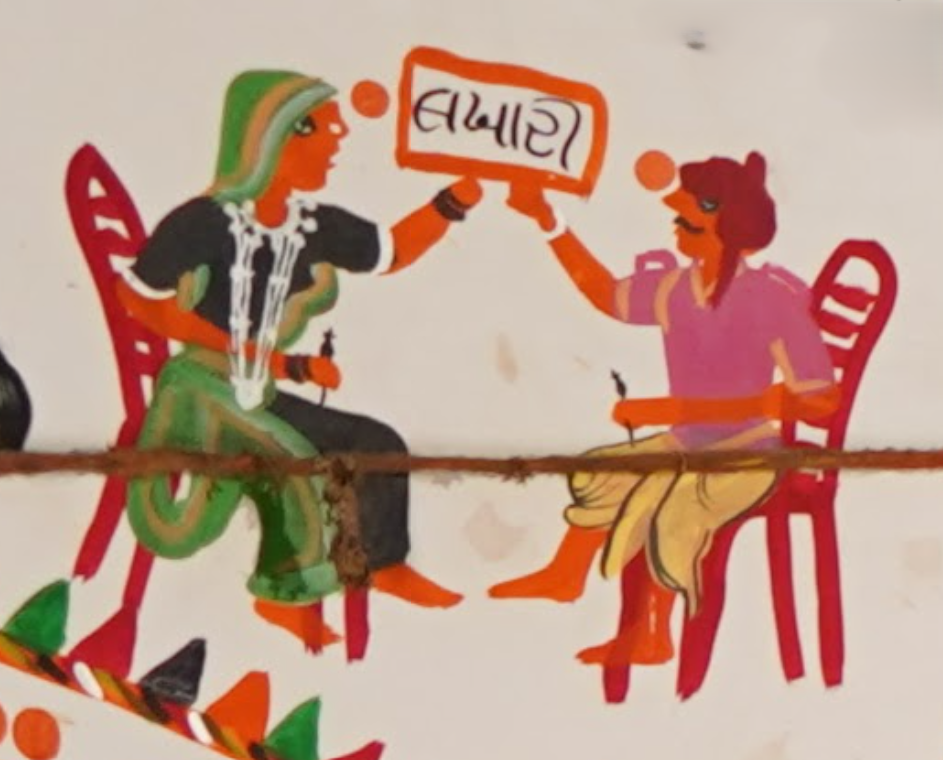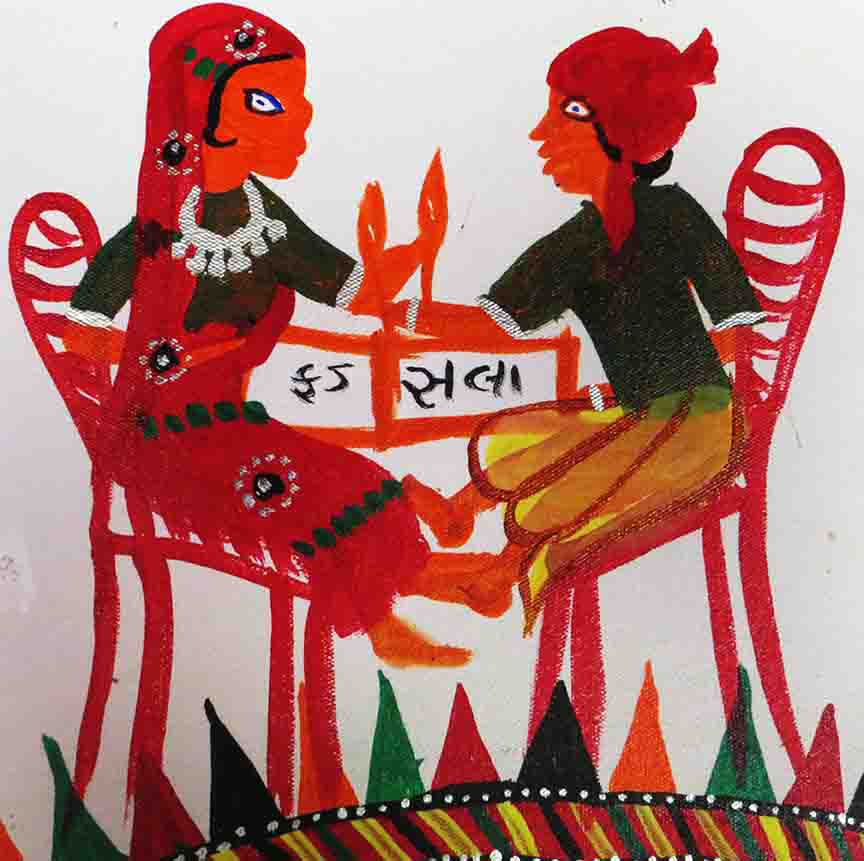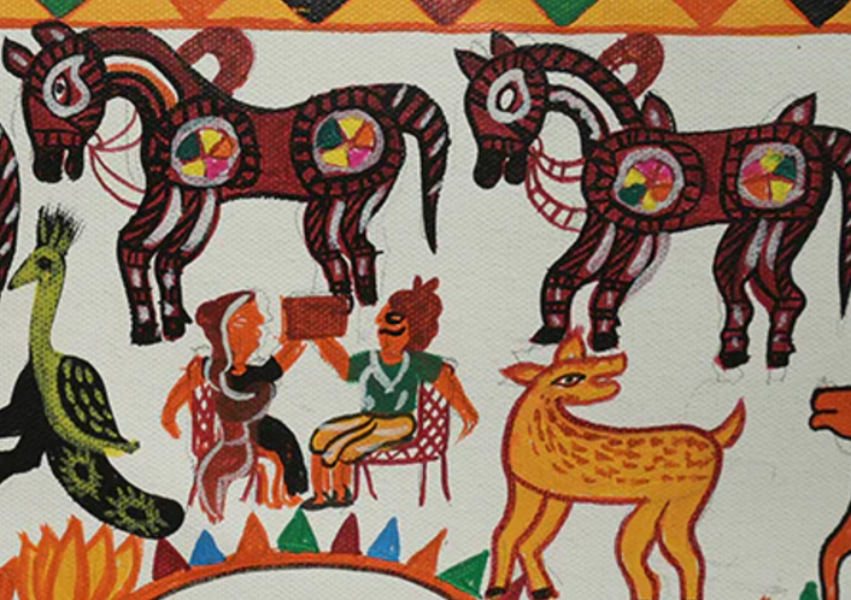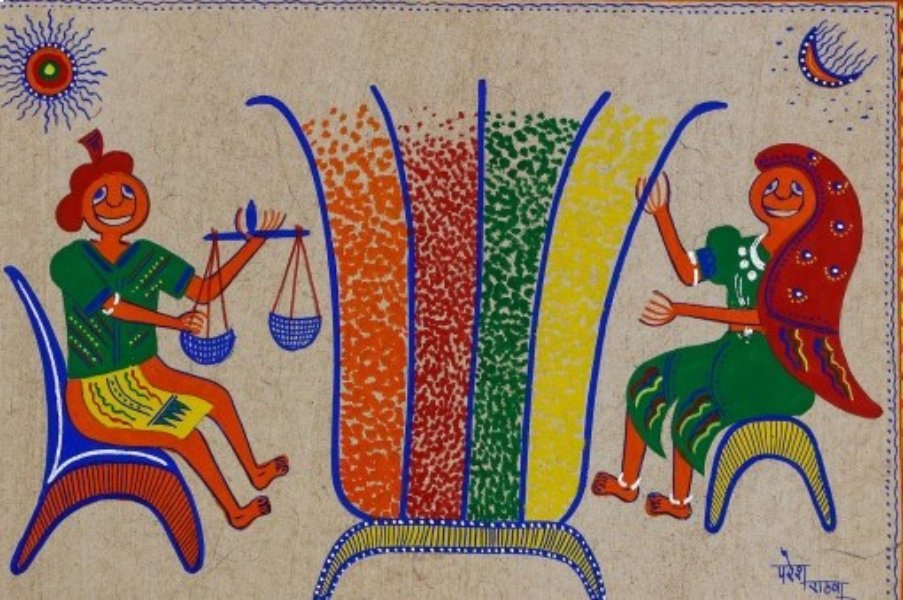
Themes
tribal paintings
Symbolism in Lakhari and Jokhari , gujarat

Lakhari and Jokhari are motifs that represent the cosmic reality of being a guardian and fertility. Lakhari symbolizes the celestial overseer of prosperity, while Jokhari evokes life cycles and the blessing of ancestors. The backdrop is laid for these motifs to represent the interactions between deities, man, and nature, giving significance to the concepts of unity and co-existence. These impressive and vibrant designs use animals, plants, and heavenly motifs to enhance the spiritual communication with nature.

The Lakhari and Jokhari motifs symbolize cosmic guardianship and fertility. Lakhari often represents the celestial overseer of prosperity, while Jokhari is tied to life cycles and ancestral blessings. These motifs illustrate interactionThe Pithora paintings of the Rathwa tribe represent sacred pictorial bases of loud, mythological tales. The motifs of Lakhari and Jokhari represent the celestial beings that constitute the key cultural and spiritual identity of this community. On the sacred walls, these motifs tie together myth, nature, and ritual, making them an integral part of tribal ceremonies. The paintings act as a link between ancestral customs and spiritual beliefs, thereby articulating living stories to carry the Rathwa heritage forward. of unity and coexistence. The vibrant designs combine animals, plants, and celestial figures, fostering a deep spiritual connection with the environment.
The artists use natural materials such as natural pigments, rice paste, and cow dung in quite elaborate ways to produce these murals. They make fine details of their works using brushes made of bamboo or cotton. This whole procedure begins with an elaborate ceremony of preparing the surface: in brief and metaphoric terms, the walls must be purified and sanctified for painting. These motifs are finally layered with colors, which in themselves stand as symbols, with their selection reflecting the intended spiritual meaning.

The act of making Pithora paintings itself is a ritualistic act of reverence. The motifs of Lakhari and Jokhari are painted during vows of invocation or thanksgiving. It is also believed that these figures bless the community with prosperity, protection, and harmony. The art is endowed with meaning in tribal festivals and rites that renew the collective identity and the tribal memory.

The characteristics of Lakhari and Jokhari motifs include intense color, symmetrical designs, and highly intricate line work. The designs incorporate natural and mythical motifs that tell sacred stories. In their dynamic, earth-oriented representations of life and spirituality, these motifs embody a vision of balance between the human realm and the cosmic in the world view of the Rathwa.

